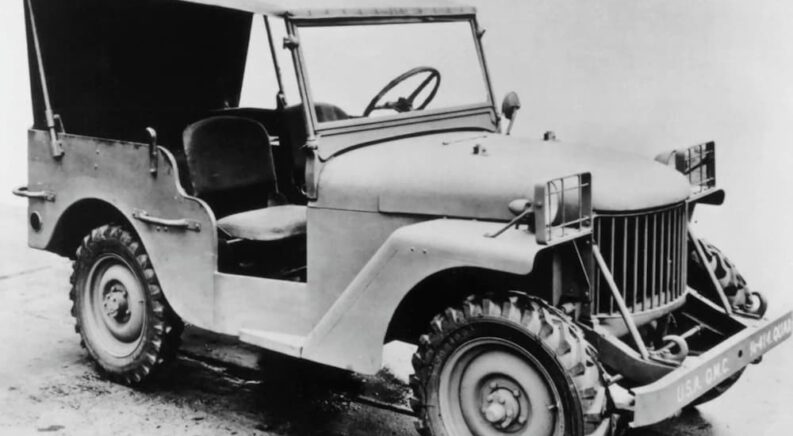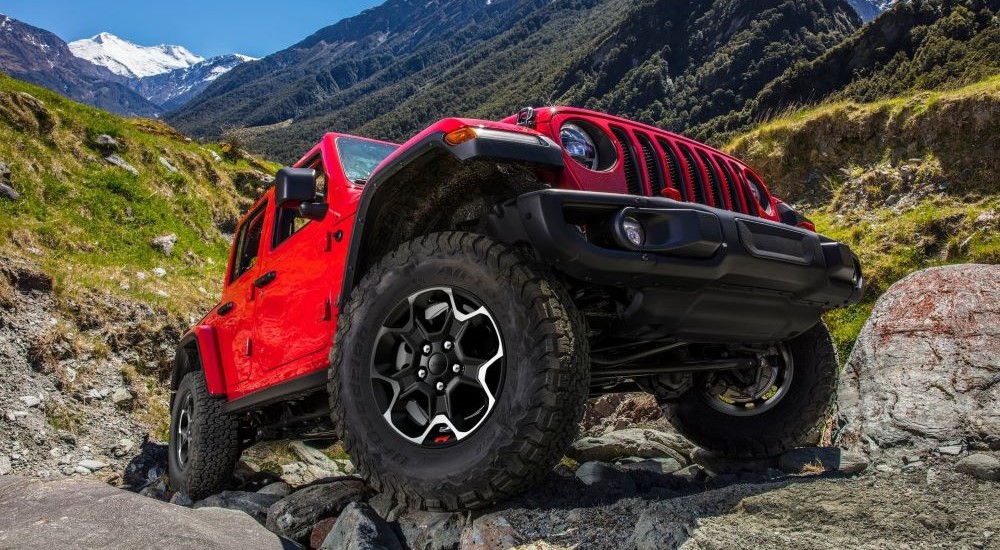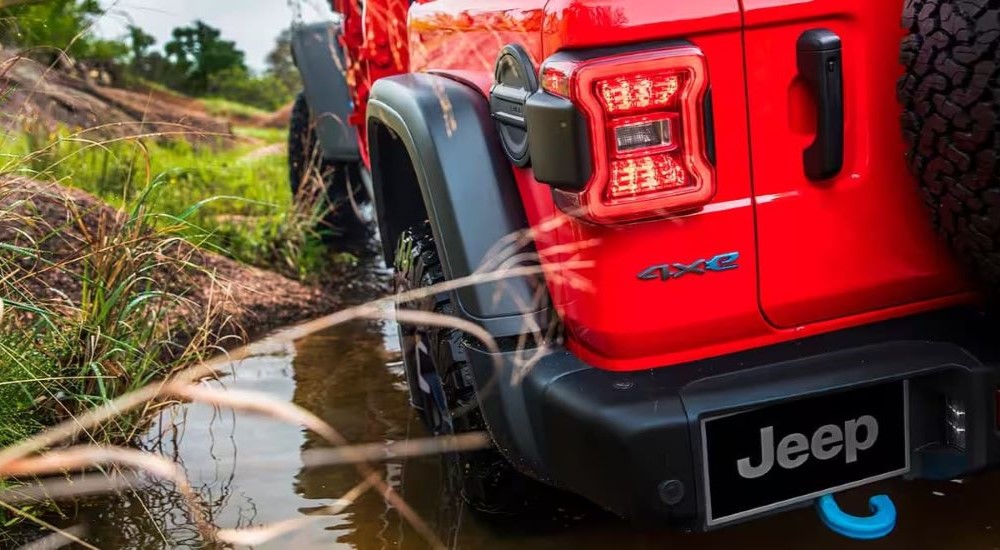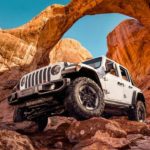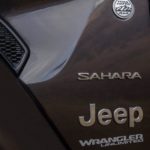Full disclosure: despite certain similarities of beard, I am not, nor have I ever been, the famed 16th-century French astrologer and prognosticator Nostradamus. That being said, I will make a few predictions today about what the future might hold for the Jeep Wrangler, which will most likely not come true, but if they do, then I can take credit for my tremendous foresight. Rather than giving in to wild speculation, fun though that might be, instead, I’ll look at where the Jeep Wrangler has come from and been, where we’re at now, and try to gaze ahead into the foggy landscape of the future to see where it’s heading.
There’s no denying that you can pretty easily find a Wrangler at just about any used Jeep dealership these days since they’ve been so popular for the last few decades. But the Wrangler isn’t as old as the Jeep brand, so there’s no guarantee that we’ll see it still on the road as a new model several decades from now. In fact, at least one current indicator could worry hardcore Wrangler fans, hoping their grandchildren will share their love for the off-road champion in another 50 years. But I’m getting ahead of myself—let’s jump in and see what kind of story the Wrangler has had and likely will have in the years to come.
A Brief History of the Jeep Wrangler
A wise man once said, “In order to paint the future, you must first read the past.” That’s a bit of a mixed metaphor, but it serves our purpose just fine because the point still stands that the best way to understand what’s to come is to appreciate where we’ve been. Looking at the Jeep Wrangler starts in the 1980s when it was first released—but we have to go back further to fully appreciate the Wrangler’s history.
Ultimately, the Jeep Wrangler’s origins go back to the early 20th Century and the period of time between World War I and World War II. The US Army realized following WWI that it needed a new standard vehicle for use in military operations. After a somewhat lengthy and chaotic development process, the result was the Willys MB Jeep that arrived just in time to be a vital piece of equipment for WWII. Soldiers loved their Jeeps so much that after the war, when they came home, they wanted to get their hands on such a vehicle. The Civilian Jeep or Jeep CJ hit the scene in the early 1940s and remained a staple of the American auto industry, switching hands from one brand to another until it ended up with American Motors Corporation (AMC) in the 1980s.
AMC was acquired by Chrysler in the ‘80s, and around that same time, the Jeep CJ was discontinued just in time for the Jeep Wrangler to be introduced. Officially, the Wrangler was never called a successor to the CJ, but it’s always been very clear that its design and engineering were heavily inspired by the CJ, and every Jeep fan sees the Wrangler as the CJ’s follow-up. Since it first hit the road for the 1987 model year, the Wrangler has been through numerous generations, with the most recent fourth generation launching for 2018 and getting a facelift just this year, marking the 2024 Wrangler as an exciting new option for its fans.
Modern Times: A Tale of Three Wranglers
Speaking of the 2024 Jeep Wrangler, now that we have a sense of where it’s been, we’d be well served to look at where it’s at now. As I just said, the 2024 Wrangler has received a facelift that makes it look better than ever, with a redesigned exterior that feels refreshed and reinvigorated. Don’t get me wrong, this is still clearly a Jeep Wrangler from its overall boxy shape to the seven-slot grille and round headlamps, but it looks sharper than it did last year. Honestly, the Wrangler had been resting on its laurels for a while now, and the launch of the Ford Bronco has forced Jeep to bring the Wrangler up to a new standard that once again makes it competitive.
The standard Jeep Wrangler is a marvel of off-road capability and design, with numerous trim levels available to deliver everything drivers want. Off-road functionality reaches its peak with the Rubicon trim, which has long set the standard for off-road performance in the industry. Other trims and a number of different engines are all available, giving drivers a wide range of options to choose from. But two other trims need to be mentioned…
One of the most exciting options on the market, at least for Wrangler fans looking for incredible performance, is the Wrangler Rubicon 392. This beast houses a class-exclusive 6.4L HEMI V8 engine that delivers 470 hp and 470 lb-ft of torque—remember that the Wrangler is a midsize SUV, so that kind of power is incredible. The Wrangler Rubicon 392 can go from 0 to 60 mph in just 4.5 seconds and run the quarter-mile in 13 seconds, all while maintaining almost 13 inches of ground clearance with a 46.7-degree approach angle and 34 inches of water fording capability.
Jeep’s still not done, however, because they’ve also changed everything their fans expected with the impressive Wrangler 4xe trim. This is a plug-in hybrid electric vehicle (PHEV) that offers an estimated 370 miles of total range from a full tank and full battery charge or more than 20 miles of all-electric range with a fully charged battery. There’ve been plenty of EV critics loudly decrying the Wrangler 4xe, but that hasn’t stopped it from quickly becoming the best-selling PHEV in America. So what does all this mean?
An Uneasy Trail Lies Ahead for the Wrangler
All the evidence seems to clearly point to one thing: the Wrangler isn’t going anywhere. With the 4xe trim, Jeep has proven that people will embrace an electrified Wrangler, and I’d say it’s only a matter of time until we get an all-electric Wrangler, probably sooner rather than later. At least, that’s what I would say if it weren’t for one thing: the upcoming Jeep Recon.
Set to launch next year as a 2025 model, the Recon is an all-electric off-road SUV that looks a lot like the Wrangler. It’s not the Wrangler, certainly, but its design was clearly inspired by it in much the same way the Wrangler’s design was inspired by the CJ before it. It’s a bit smaller than the Wrangler, but the Recon has many of the same great features it has: incredible off-road performance, including an expected Rubicon trim, removable doors, a fold-down windshield, and much more. This leaves me to wonder: is there room for the Jeep Recon and a Wrangler EV in the same lineup? Or even the need for one?
Who Can Predict the Future?
I can’t—I said as much from the beginning—but we can make some educated guesses about what the future might have in store for the iconic Jeep Wrangler. 45 years ago, if you asked someone if the Jeep CJ was going anywhere, they’d say you were crazy and that it was an institution in the American auto industry. Ask someone today if the Wrangler is going to be discontinued anytime soon, and I’m sure they’d say the same, but history is well known to rhyme, even if it doesn’t precisely repeat itself.
It’s entirely possible that Jeep will decide to phase out the Wrangler in favor of leaning into the Recon as its new, all-electric flagship. We could also see the Wrangler be discontinued for a few years, only to return due to “popular demand,” thereby making it hotter than ever. Or, maybe it won’t go anywhere, and we’ll get an all-electric Wrangler in the next couple of years. Only time will tell, and when it does, we can be sure that Jeep will deliver something well worth the wait.

